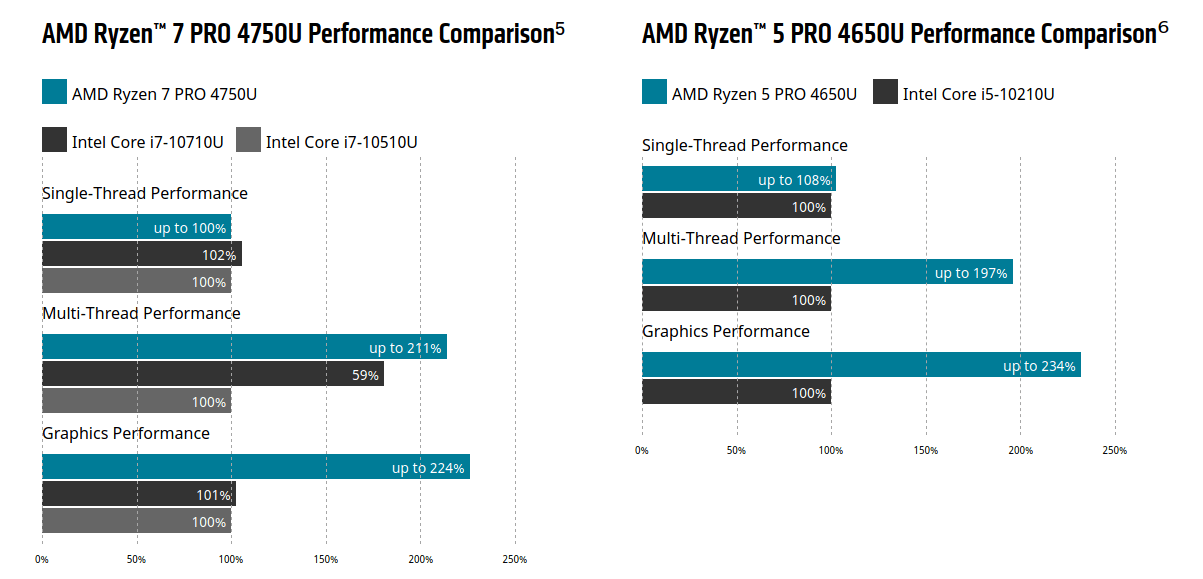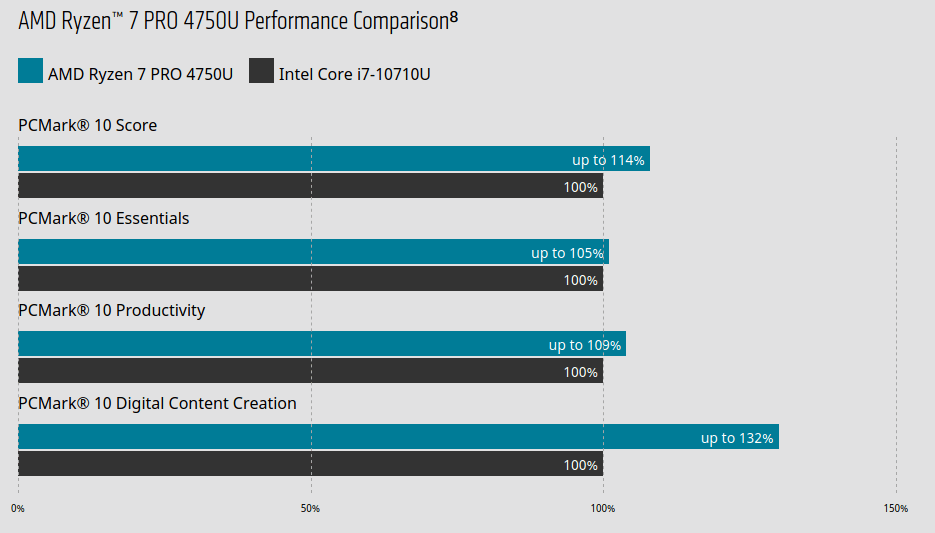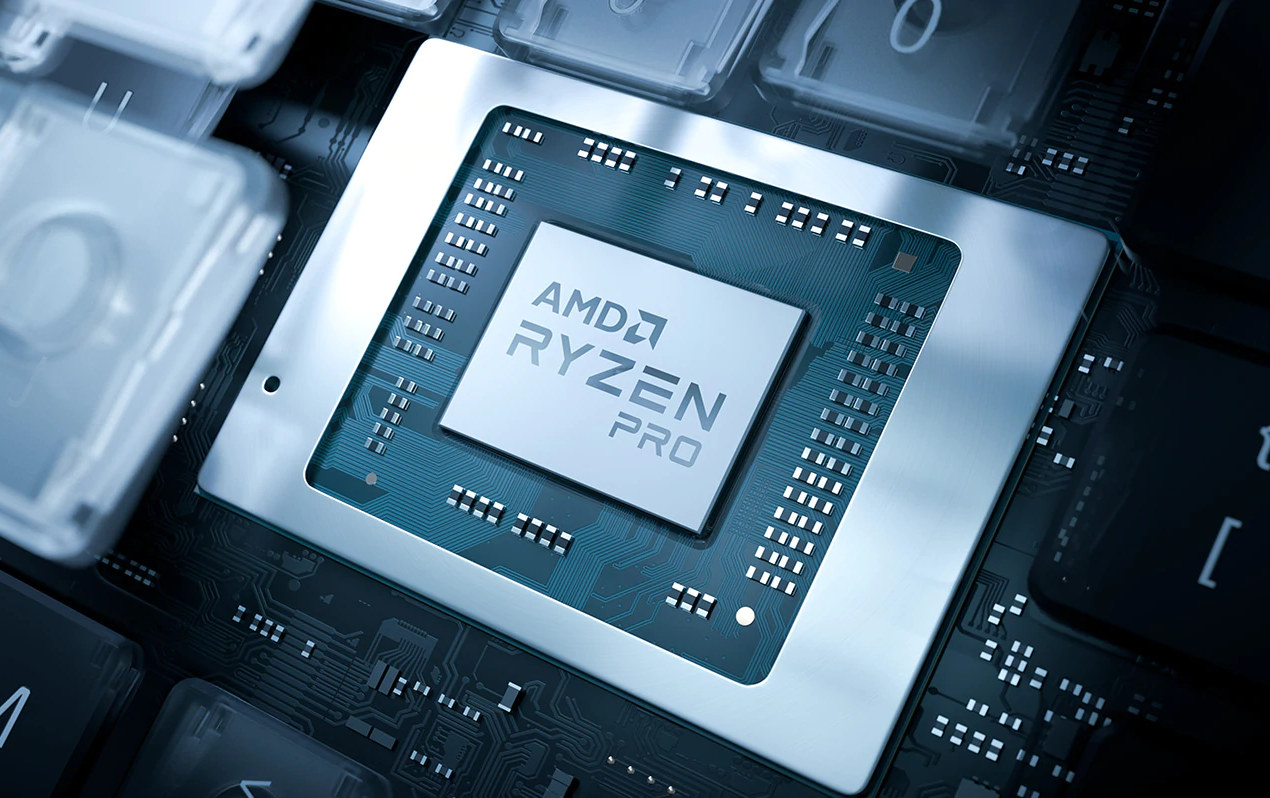AMD announced 15W to 45W mobile processors at CES 2020 with AMD Ryzen 4000-U series processors designed for ultra-thin laptops. The company has now unveiled AMD Ryzen PRO 4000 series mobile processors for business customers requiring features usually found in Intel vPro processor with AMD PRO Technologies including improved security, manageability, reliability, and longevity with at least 24-months of planned availability.
Three AMD Ryzen PRO 4000 processors have been launched all with 15W TDP (configurable between 10W and 25W):
- AMD Ryzen 7 PRO 4750U octa-core/16-thread processor @ 1.7 GHz / 4.1 GHz (Turbo single core) with 7 Radeon GPU cores, 12MB L2/L3 cache
- AMD Ryzen 5 PRO 4650U hexa-core/12-thread processor @ 2.1 GHz / 4.0 GHz with 6 Radeon GPU cores, 11 MB L2/L3 cache
- AMD Ryzen 3 PRO 4450U quad-core/octa-thread processor @ 2.5 GHz / 3.7 GHz with 5 Radeon GPU cores, 6MB L2/L3 cache
The processors are also said to be the first world’s first x86 7nm commercial notebook processors being manufactured with a TSMC 7nm FinFET process.
AMD pitted its new processors against 15W(non-vPro) Intel Comet Lake processors namely AMD Ryzen 7 PRO 4750U against Intel Core i7-10510U/i7-10710U, and AMD Ryzen 5 PRO 4650U against Intel Core i5-10210U processor showing similar single-thread performance, but much better multi-thread performance due to the higher number of cores.

PCMark 10 benchmarks show AMD Ryzen 7 PRO 4750U to be faster than Intel Core i7-10710U in all workloads, but especially digital content creation where multi-thread performance is more important.

AMD Ryzen PRO 4000 powered enterprise laptops from HP and Lenovo are expected in the first half of 2020. Further information may be found on the product page and press release.

Jean-Luc started CNX Software in 2010 as a part-time endeavor, before quitting his job as a software engineering manager, and starting to write daily news, and reviews full time later in 2011.
Support CNX Software! Donate via cryptocurrencies, become a Patron on Patreon, or purchase goods on Amazon or Aliexpress





